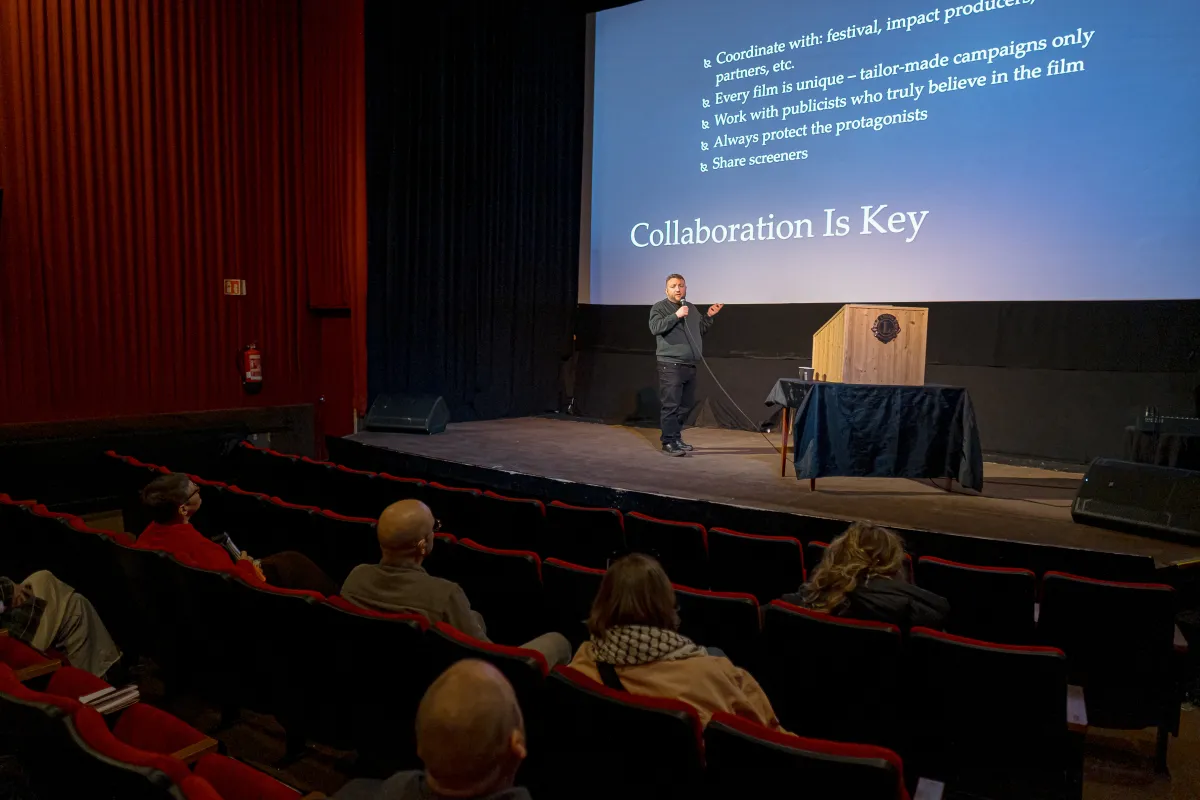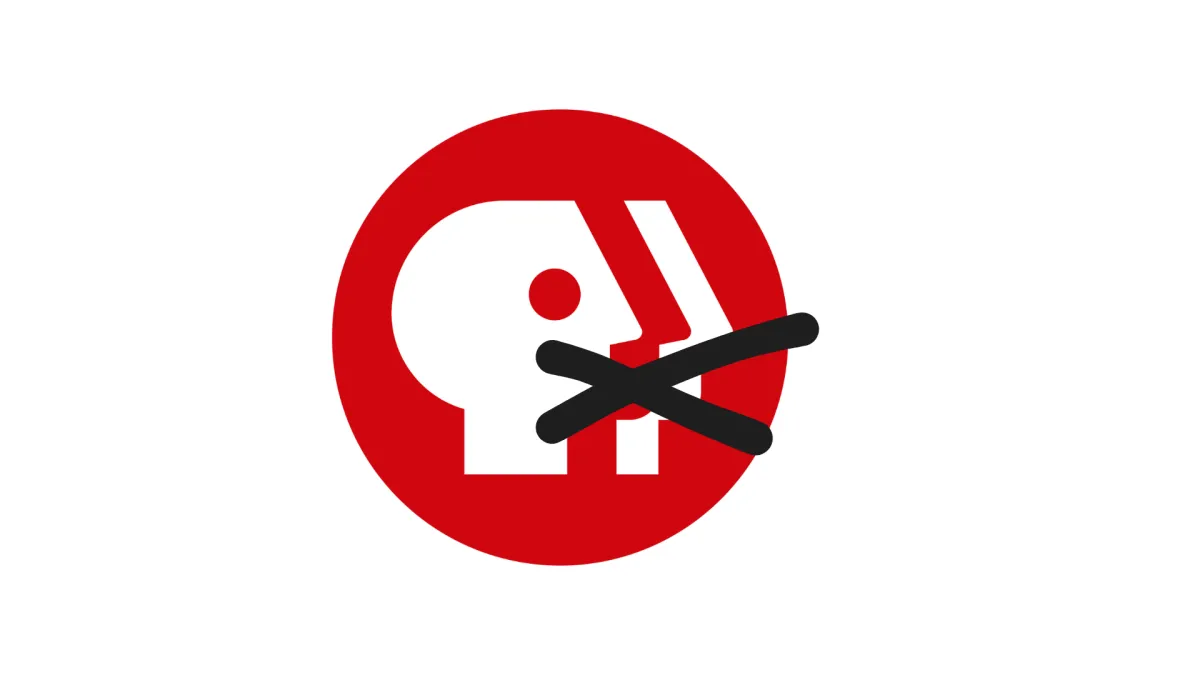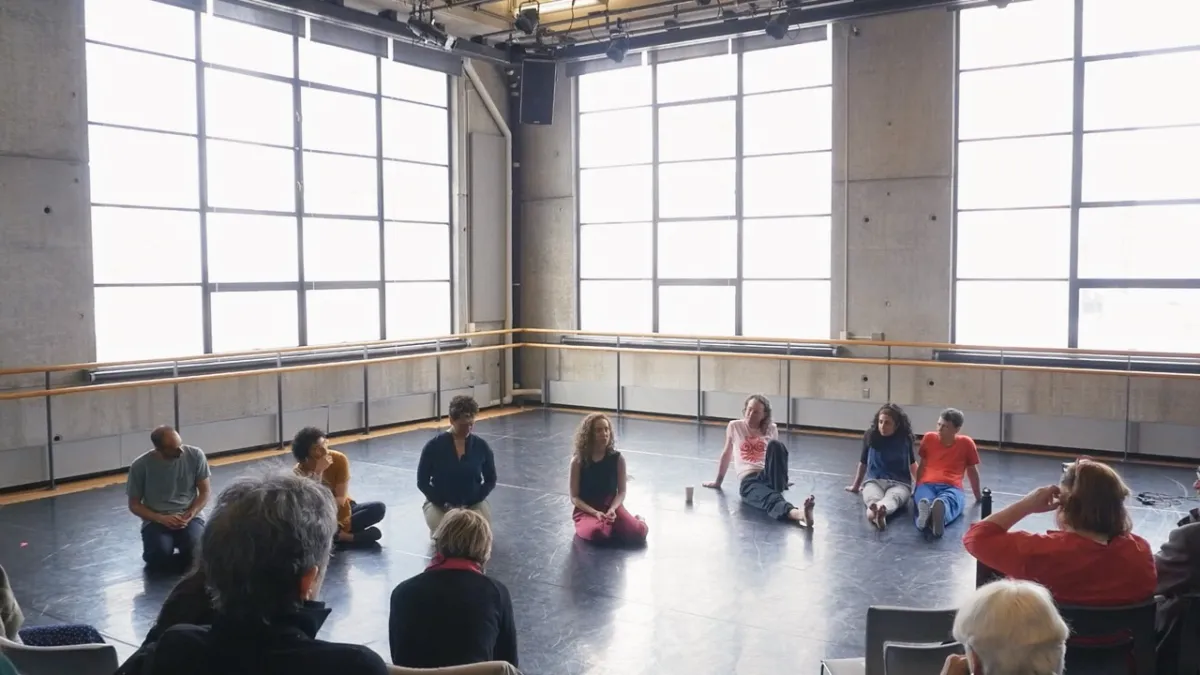
How To Get Your Doc in the Spotlight: A Press Strategy Talk at Iceland’s Skjaldborg Festival

Image credit: Patrik Ontkovic. Courtesy of Skjaldborg Festival
This article is a condensed and slightly adapted version of a talk I delivered on June 8, during the Skjaldborg documentary film festival in Patreksfjörður, Iceland, titled “The Press Playbook: How To Get Your Doc in the Spotlight.” What follows reflects both the structure and tone of that session—direct, personal, and grounded in real-world practice.
On Iceland’s remote Westfjords, where sea winds sculpt the cliffs and the sun barely sets in June, the town of Patreksfjörður transforms each Whitsun weekend into a haven for documentary filmmakers. This is Skjaldborg—a festival all about community, conversation, and most importantly, cinematic courage. For several days, the local cinema becomes the site of shared discovery, where nonfiction storytelling is celebrated with clarity, openness, and a unique northern intimacy.
This year’s edition, which unspooled from June 6–10, upheld that spirit, hosting new Icelandic works, international guests, and a lively mix of screenings, parties, talks, and peer-to-peer encounters. Guest of honor and 2024 CPH:DOX-winning Alessandra Celesia (The Flats) reflected on her practice in a warmly received conversation with musician Colm O’Herlihy, while the Works-in-Progress strand buzzed with early feedback and generous critique.
Amidst this vibrant setting, practical discussions on the craft and circulation of documentary also found space—among them, a session I presented on June 8 at Skjaldborg Cinema titled “The Press Playbook: How To Get Your Doc in the Spotlight.”
My presentation, structured as a pragmatic roadmap for filmmakers navigating the complex world of media, aimed to highlight what a well-planned press strategy looks like, how to build visibility during a film’s life cycle, and why collaboration is essential for sustainable exposure.
Making Media Work for Docmakers
Let me open by clarifying the key roles involved in shaping a film’s public image. We have critics, film journalists, editors, and publicists—and each serves a different function. Critics offer subjective analysis; journalists report facts and industry developments; editors determine what gets published and when; and publicists act as precious intermediaries between film teams and the media. Understanding these differences is crucial for filmmakers.
Some probably underestimate the value of a coordinated press strategy, especially at early production stages. But here’s one central message I want to stress: visibility doesn’t begin at the world premiere—it begins during production, or even development. Press engagement must be part of a broader communications strategy, not an afterthought.
First, let’s explore the range of media types worth targeting. Think of international trades like Variety, Screen International, Deadline, and Cineuropa. Then there are specialized magazines like this one, Business Doc Europe, Sight & Sound, The Film Stage, MUBI Notebook, and Modern Times Review. And yes, don’t forget general-interest English-language outlets such as the Guardian, New York Times, or Middle East Eye. Local and regional media also play an important role, especially for grassroots campaigns or films with a community-based impact approach.
Choosing the Right Partners, Crafting the Right Tools
Now, I want to address working with publicists. There’s a widespread misconception that only large-budget films or top festival contenders require professional communications help. In reality, even shorts and micro-budget docs benefit enormously from a third-party publicist or PR consultant. External press representatives can speak about the project with clarity and distance, and often bring an existing network of trusted journalist contacts to the table. If the budget does not allow it, it is still better to delegate a team member who is exclusively dedicated to rep the film, preferably with strong communication and public relations skills.
Let’s review what makes an effective Electronic Press Kit, or EPK. It should include a logline, a short synopsis—no longer than five to seven lines—a longer version for broader context, and at least one entirely visual page, ideally the cover. Include appealing stills from on-set photographers—not screenshots taken from VLC, please! Supplementary materials like trailers, teasers, audio excerpts, or behind-the-scenes content should be neatly organized and easily accessible.
Though mock interviews are a common element in EPK, be cautious with them. While they can be valuable additions to an EPK, they can also backfire. Inexperienced or lazy writers might “steal” those questions and repeat them endlessly, resulting in many indistinguishable stories.
Throughout this process, I want to underscore the importance of clear, unexaggerated language. Avoid using inflated adjectives like “slow-burner” or “meditative,” or attempts to dictate the viewer’s emotional reaction. Instead of selling the film by claiming emotional impact, let your work speak for itself by focusing on themes, subjects, and formal strengths.
Poor grammar or unpolished translations can undermine even the most compelling projects. Proofreading by a native speaker is essential.
Timing, Targeting, and the Power of Segmentation
Timing and segmentation are essential when announcing your project. For example, pitching a story about your wonderful documentary set in the Ukrainian countryside while major markets and festivals such as Cannes, the AFM, the EFM, or IDFA are taking place is not ideal. The earlier, the better. Otherwise, if it’s not urgent, wait for the calm after the storm.
Segment your exclusive content wisely. For example, offer a teaser to Cineuropa, announce your world sales agent via Screen International, and launch the trailer via Variety. This segmentation increases the chances of coverage and helps shape a coherent narrative across outlets.
Coordinate closely with festival press offices and sales agents to avoid overlapping or conflicting communications. Fragmented campaigns dilute your message and confuse journalists, who already work under tight time and space constraints.
Another point: understand journalists’ working conditions. They might be enthusiastic about your project but unable to cover it due to lack of editorial space or budgets. A couple of polite reminders are acceptable; beyond that, step back and let interest grow organically. You never know what the future holds.
Even Bad Press Has Value
Many filmmakers dread negative reviews, but it’s important to understand that even mixed or negative press can be part of your film’s visibility journey. Public conversation—whether celebratory or skeptical—ensures your film enters a larger cultural dialogue. Trying to control or influence press coverage harms your film’s credibility and the trust between creators and critics. Focus on increasing coverage instead.
More broadly, visibility breeds more visibility. Coverage triggers further interest from festival programmers, funders, or other journalists. Always have press materials and screeners ready on a safe platform (no, Vimeo is not safe!) to support this cycle of amplification.
Collaboration and Maintaining Your Online Footprint
Good press work is never done in isolation. Campaigns must be designed around your project’s specific needs. Collaborate with impact producers, festival teams, distributors, and external partners to align messaging and strengthen reach. This coordination effort is why working with a publicist who genuinely believes in your project is not just preferable—it’s necessary.
Be careful representing protagonists or vulnerable subjects. Press campaigns should protect, not exploit. Inform protagonists about what is shared, and avoid oversharing or sensationalizing sensitive story elements.
Finally, extend visibility through smart digital maintenance. Keep your project website, IMDb pages, and Wikipedia entries updated. Be active and responsive on social media, tagging partners like festivals, institutions, and backers to reinforce connections. Share successes—a festival win, a glowing quote, a first media mention—as part of a consistent and respectful public narrative.
When quoting press, accuracy is non-negotiable. Misrepresenting critics’ words or paraphrasing without context risks long-term trust. Similarly, don’t chase journalists immediately after a screening asking for feedback. Let them reflect freely on your film. Don’t email them requesting “advance thoughts before publishing.” If that happens to me, I usually ignore it or respond with the published review link and a “happy reading.” Press coverage is a shared resource—not a marketing blurb to be trimmed or polished.
Toward a Culture of Media Literacy
Skjaldborg may be one of Europe’s smallest festivals celebrating nonfiction, but it offers something rare: time and space for real reflection. Filmmakers here openly discuss not just what they make, but how their work moves through the world—who sees it, who writes about it, and what happens after the lights go up.
In today’s cultural landscape, where visibility determines a film’s impact and longevity, media literacy is not optional. Whether launching a debut short or navigating the international circuit with a feature-length doc, you need to understand the ecosystem you operate in—and work within it ethically, efficiently, and creatively.
By sharing these strategies, I hope to offer not just tools, but a mindset shift: from reactive to proactive, from solitary to collaborative, from passive hope to deliberate engagement. After all, documentaries are made to be seen. And with the right strategy, they will be.
Davide Abbatescianni is a film critic and journalist based in Rome. He works as an International Reporter for Cineuropa and regularly contributes to publications such as Variety, New Scientist, The New Arab, Business Doc Europe, and the Nordisk Film & TV Fond website. He also serves as a funding expert for two European financing bodies.




